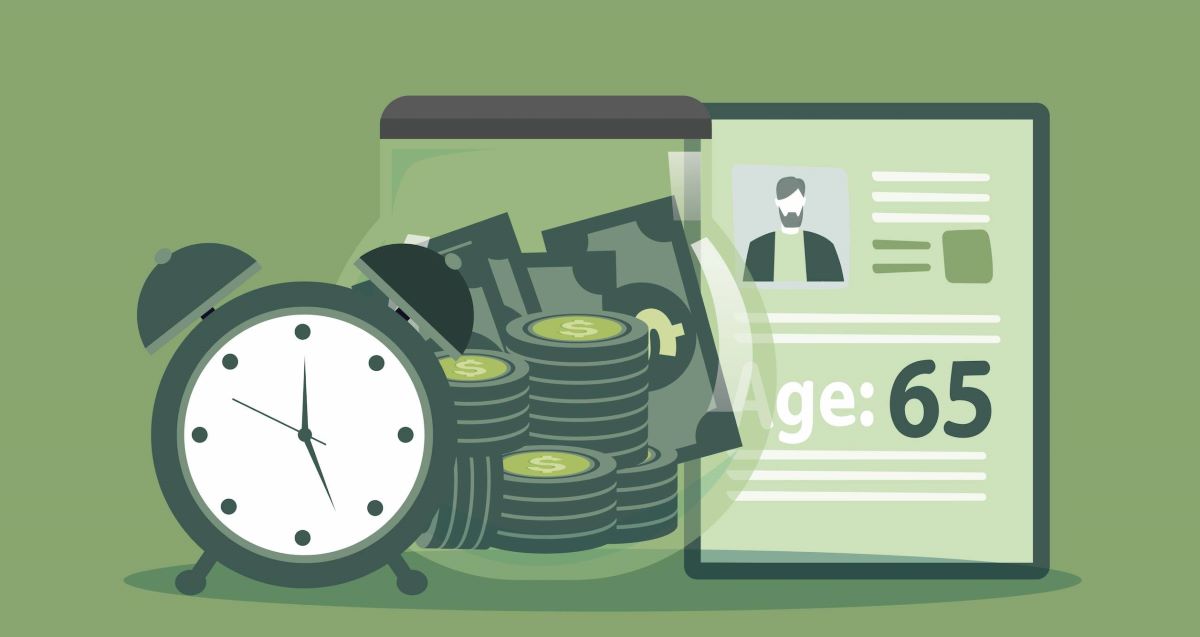

Finance
When Did Installment Credit Start
Published: February 21, 2024
Discover the origins of installment credit and its impact on finance. Learn about the history and evolution of installment credit in the financial industry.
(Many of the links in this article redirect to a specific reviewed product. Your purchase of these products through affiliate links helps to generate commission for LiveWell, at no extra cost. Learn more)
Table of Contents
Introduction
Introduction
Installment credit has become an integral part of modern consumer finance, allowing individuals to make purchases and pay for them over time. This financial arrangement has a rich history, dating back to ancient civilizations where bartering and credit systems were prevalent. Over time, installment credit has evolved to meet the changing needs of consumers and businesses, shaping the way people manage their finances and make significant purchases.
Exploring the origins and development of installment credit provides valuable insights into the financial practices that have influenced modern economies. From the early forms of installment credit to the emergence of modern consumer lending, the evolution of this financial concept has played a pivotal role in shaping consumer behavior and economic trends.
This article delves into the history of installment credit, tracing its roots and examining its impact on consumer behavior. By understanding the historical context and evolution of installment credit, we can gain a deeper appreciation for its significance in today’s financial landscape.
Early Forms of Installment Credit
Early civilizations utilized various forms of credit to facilitate trade and commerce. In ancient Mesopotamia, merchants engaged in barter trade, exchanging goods and services without immediate payment. Over time, this evolved into a credit system where transactions were recorded on clay tablets, allowing individuals to defer payment and settle their debts at a later date.
During the Roman Empire, the practice of credit extended beyond simple bartering. Romans utilized a system known as “stipulatio,” which involved a formal contract outlining the terms of a loan or credit arrangement. This early form of credit laid the groundwork for future financial transactions, demonstrating the ancient roots of installment credit.
Fast forward to the Middle Ages, and the concept of installment credit continued to evolve. Craftsmen and artisans offered goods on credit, allowing customers to pay in installments rather than upfront. This practice enabled individuals of varying financial means to acquire essential goods and services, laying the foundation for the modern consumer credit system.
As societies progressed, installment credit became more structured, with merchants and lenders formalizing credit arrangements to accommodate the growing demand for goods and services. The Industrial Revolution further propelled the development of installment credit, as technological advancements and increased production led to a wider array of consumer goods becoming available on credit.
Throughout history, installment credit has adapted to meet the changing needs of consumers and businesses, evolving from informal credit arrangements to structured lending practices. Understanding the early forms of installment credit provides valuable insights into the historical progression of consumer finance and the enduring impact of credit on economic development.
Emergence of Modern Installment Credit
The 19th century witnessed significant advancements in the realm of consumer finance, leading to the emergence of modern installment credit. One of the pivotal moments in the evolution of installment credit was the establishment of the Singer Sewing Machine Company in 1851. This innovative company not only revolutionized the textile industry with its sewing machines but also pioneered the concept of installment credit to boost sales.
Singer Sewing Machine Company introduced a novel approach to purchasing its sewing machines by offering them on credit, allowing customers to pay in installments. This groundbreaking strategy proved to be immensely successful, making sewing machines more accessible to a broader demographic and setting a precedent for future installment credit practices.
As the 20th century unfolded, installment credit became increasingly ingrained in consumer culture, particularly with the rise of the automobile industry. Auto manufacturers recognized the potential of offering vehicles on credit, thereby expanding their customer base and driving sales. This marked the beginning of a new era in consumer finance, as installment credit became synonymous with major purchases such as automobiles, appliances, and electronics.
The widespread adoption of installment credit was further propelled by the establishment of financial institutions specializing in consumer lending. These institutions provided individuals with the means to make substantial purchases through installment plans, reshaping the dynamics of consumer spending and economic growth.
By the mid-20th century, the concept of “buy now, pay later” had become deeply entrenched in consumer behavior, reflecting the enduring influence of modern installment credit. This shift not only transformed the way people made purchases but also contributed to the overall expansion of the consumer economy, laying the groundwork for the diverse array of credit options available today.
The emergence of modern installment credit represents a pivotal juncture in the evolution of consumer finance, shaping the financial habits and purchasing patterns of individuals across the globe.
Impact of Installment Credit on Consumer Behavior
The advent of installment credit has had a profound impact on consumer behavior, fundamentally altering the dynamics of purchasing and financial management. By offering the flexibility to make purchases and pay for them over time, installment credit has reshaped consumer attitudes and spending patterns, influencing the way individuals approach major acquisitions and everyday expenses.
One of the primary effects of installment credit on consumer behavior is the increased accessibility to goods and services. With the option to spread payments over a predetermined period, individuals can afford items that may have been financially out of reach if required to pay in full upfront. This accessibility has democratized consumer markets, enabling a broader demographic to participate in the economy and enjoy a higher standard of living.
Furthermore, installment credit has redefined the concept of affordability, allowing individuals to manage their cash flow more effectively. By breaking down the cost of a purchase into smaller, manageable installments, consumers can align their expenses with their income, making substantial acquisitions without experiencing a significant financial strain.
Consumer behavior has also been influenced by the psychological implications of installment credit. The allure of immediate ownership coupled with deferred payments can lead individuals to make purchasing decisions based on future income expectations rather than current financial standing. This shift in mindset has contributed to increased consumer spending, driving economic activity and fueling demand for a wide range of products and services.
Moreover, installment credit has fostered a culture of convenience and instant gratification, as individuals can acquire desired items without having to wait until they have saved the full purchase amount. This convenience has accelerated the pace of consumer transactions, contributing to the rapid turnover of goods and stimulating continuous economic growth.
While installment credit has undoubtedly transformed consumer behavior by expanding purchasing power and altering spending habits, it has also raised concerns about overindebtedness and financial discipline. The accessibility of credit has prompted individuals to exercise prudence and responsible financial management to avoid falling into cycles of debt and repayment challenges.
In essence, the impact of installment credit on consumer behavior underscores its profound influence on shaping modern consumption patterns and financial decision-making.
Conclusion
The evolution of installment credit has been a defining force in the realm of consumer finance, reshaping the way individuals engage with the economy and manage their financial resources. From its early forms in ancient civilizations to the modern consumer lending practices of today, installment credit has left an indelible mark on consumer behavior and economic dynamics.
Throughout history, installment credit has transcended cultural and geographical boundaries, enabling individuals to acquire goods and services through flexible payment arrangements. This accessibility has not only expanded consumer markets but has also propelled economic growth by stimulating demand and fostering a culture of financial inclusivity.
Moreover, the emergence of modern installment credit has revolutionized consumer spending patterns, offering individuals the convenience and flexibility to make significant purchases while managing their cash flow effectively. This shift in consumer behavior has contributed to the vibrancy of consumer economies, driving innovation and diversification in the marketplace.
While installment credit has undeniably empowered consumers and catalyzed economic activity, it has also necessitated a nuanced approach to financial responsibility and prudent decision-making. The widespread availability of credit underscores the importance of promoting financial literacy and encouraging responsible borrowing practices to safeguard against overindebtedness and financial vulnerabilities.
In conclusion, the impact of installment credit on consumer behavior has been multifaceted, influencing accessibility, affordability, convenience, and spending habits. By understanding the historical trajectory and contemporary implications of installment credit, we can appreciate its pivotal role in shaping modern economies and fostering a dynamic consumer landscape.
As installment credit continues to evolve in tandem with technological advancements and shifting consumer preferences, its enduring influence will continue to shape the financial behaviors and aspirations of individuals worldwide.














